Bento boxes are often lunch trays that feed one person. A typical Japanese bento box dinner includes rice, fish, pork, and pickled vegetables. The most common types of bento boxes include the marukonouchi bento, the koraku bento, the hinomaru bento, the shikaeshi bento, the aisai bento, the ekiben and the kyaraben.
Continue reading to discover more about the many varieties of bento boxes seen in Japan, as well as popular foods found in Bento Boxes and the best containers to use.
What is a Bento Box?
A “bento” or “bento box” is simply a Japanese lunchbox. A perfect bento lunch is carefully designed and should be a complete meal with various flavors, textures, and food categories. Rice, fish, meat, and pickled vegetables are all common ingredients.
Lunchboxes are no exception to the Japanese tendency to make use of every last bit of space–the food is packed neatly and snugly into a tiny square or rectangular form, making it convenient for children and busy office employees to consume.
Traditionally, the mother of the household creates these boxes for her children and husband, although bento boxes are now frequently purchased from convenience stores and restaurants as take-out items.
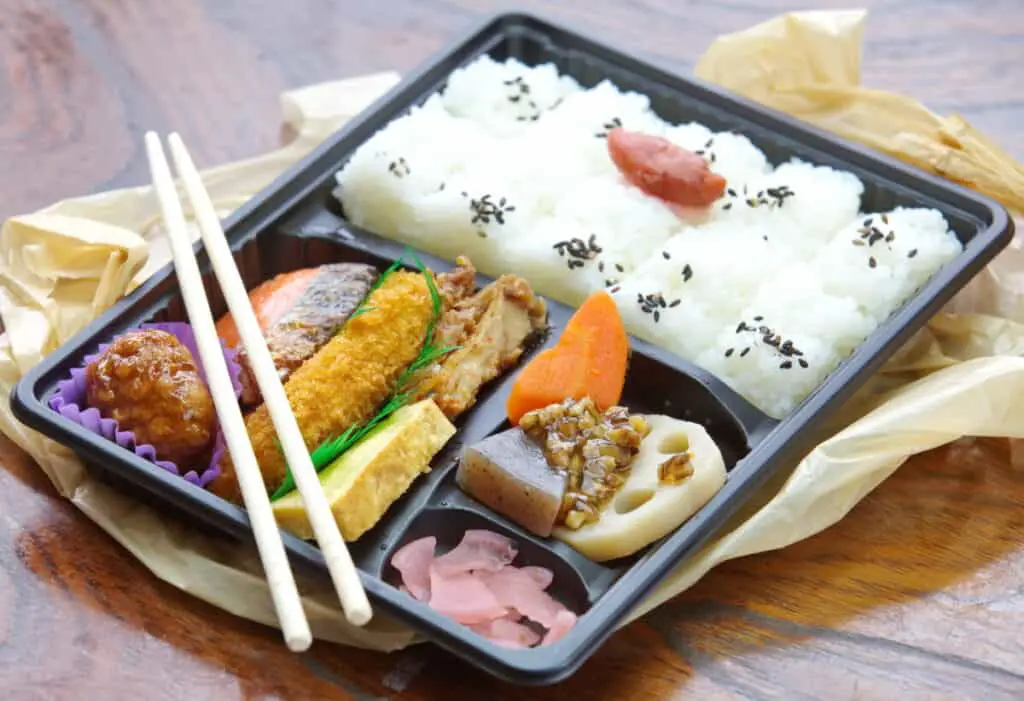
What are the Many Varieties of Bento Boxes in Japan?
A Marukonouchi Bento Box
A Marukonouchi Bento Box is a two-section bento box prepared by a caterer that is commonly found at convenience shops, supermarkets, and department stores.
The box has a rice dish on one side and tiny side dishes on the other. This form of bento was initially served at Kabuki theatres as lunch between acts for actors and audience members.
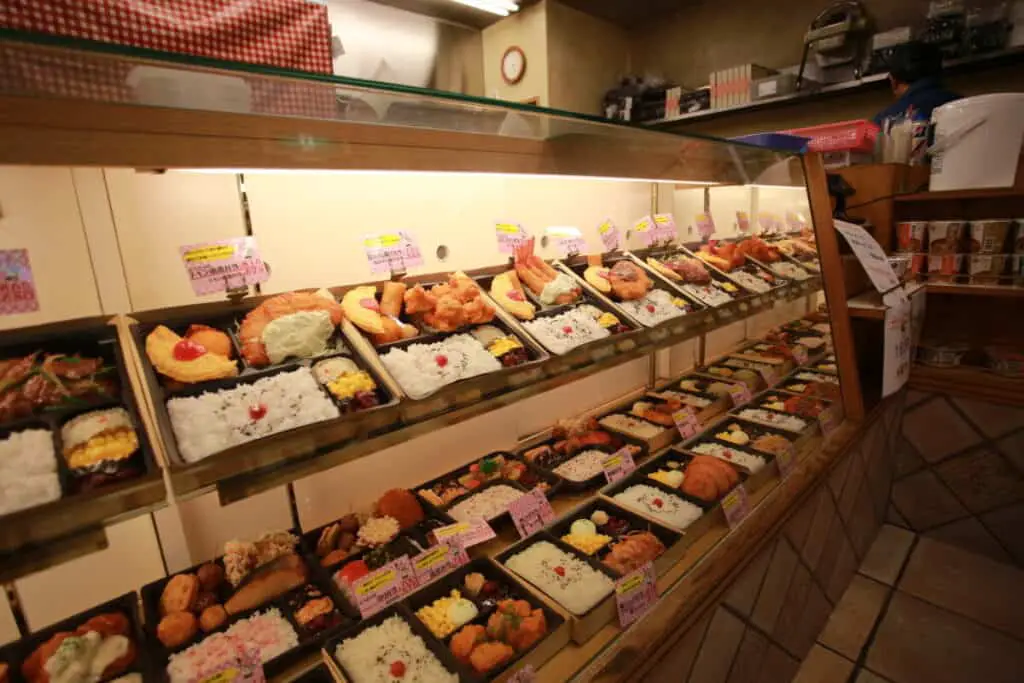
A Hinomaru Bento Box
Hinomaru, which translates as “circle of the sun,” refers to the Japanese flag and national symbol. A Hinomaru Bento Box meal, like the flag, is made with white rice and topped with a single red umeboshi, or pickled plum, to signify the sun.
A Hinomaru Bento Box is typically served with a meat or fish side dish. Aside from being patriotic, the plum also acts as a natural preservative, helping to keep the contents fresh.
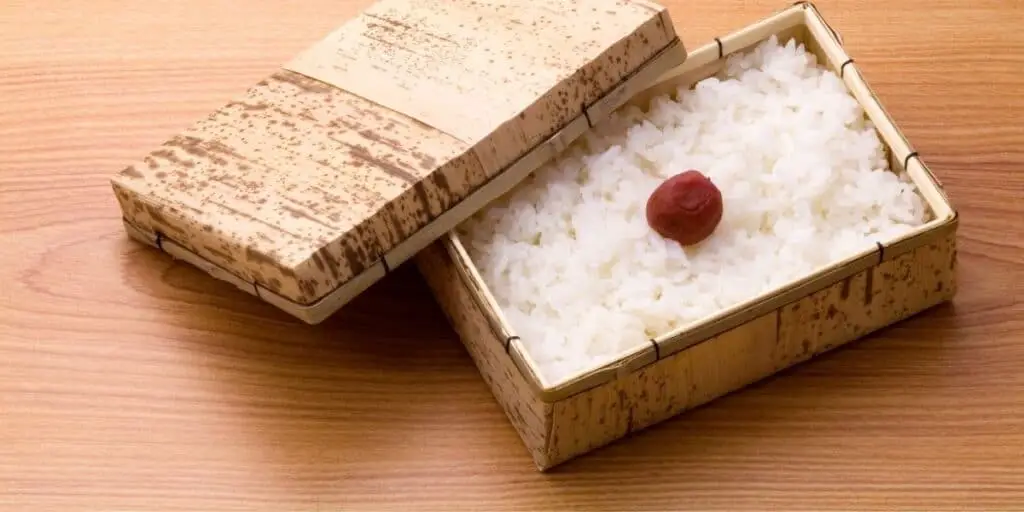
A Koraku Bento Box
A Koraku big bento, which translates to “picnic lunchbox” in Japanese, is designed to be shared by a small group. They are most prevalent during the cherry blossom viewing season, which lasts from late March until early April.
Like many traditional Japanese foods, the components in the lunchbox are purposefully chosen to match the season in which it was cooked. In a Koraku bento, you’ll find onigiri, triangle rice balls, and maki-zushi rolls as typical treats.
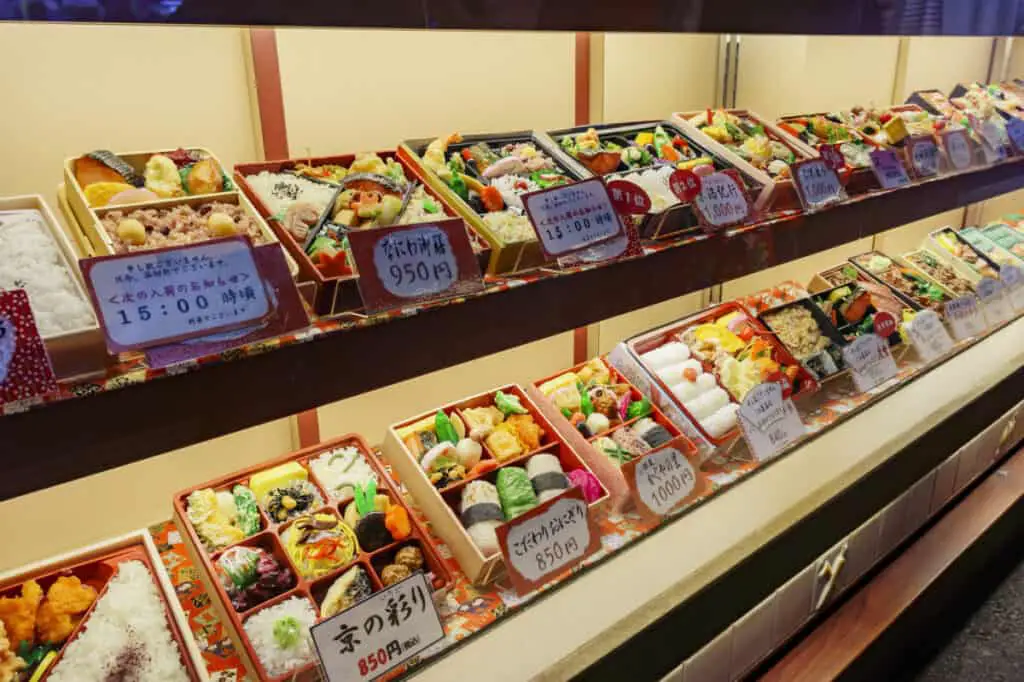
An Aisai Bento Box
An Aisai bento, or “loving wives bento,” is precisely what it sounds like. The mother of the family typically prepares this special lunch for her husband to take to work and provides a similar lunch for their children.
Similarly, during hanami season, young women in relationships may prepare a handcrafted bento for their significant other.
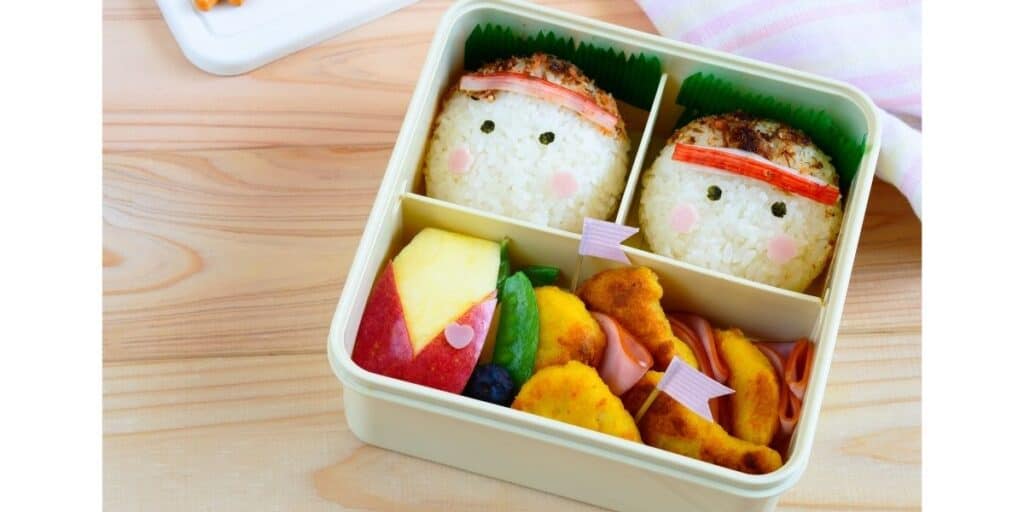
A Shikaeshi Bento Box
If you’ve ever been given a Shikaeshi Bento Box, you know you’ve done something wrong. The “revenge lunchbox” is a subtle yet effective approach for a lady to surprise her husband during his lunch break.
When one opens a shikaeshi bento box, they may discover an unsightly design, a box containing just corn, or a completely inedible meal, such as undercooked rice and a raw egg.
An Ekiben Bento Box
Ekiben Bento Boxes are high-quality lunchboxes offered at major railway stations, including on the platform and onboard the train.
The Ekiben is a whole dinner provided in a box made of plastic, wood, or ceramic, accompanied by a set of disposable chopsticks.
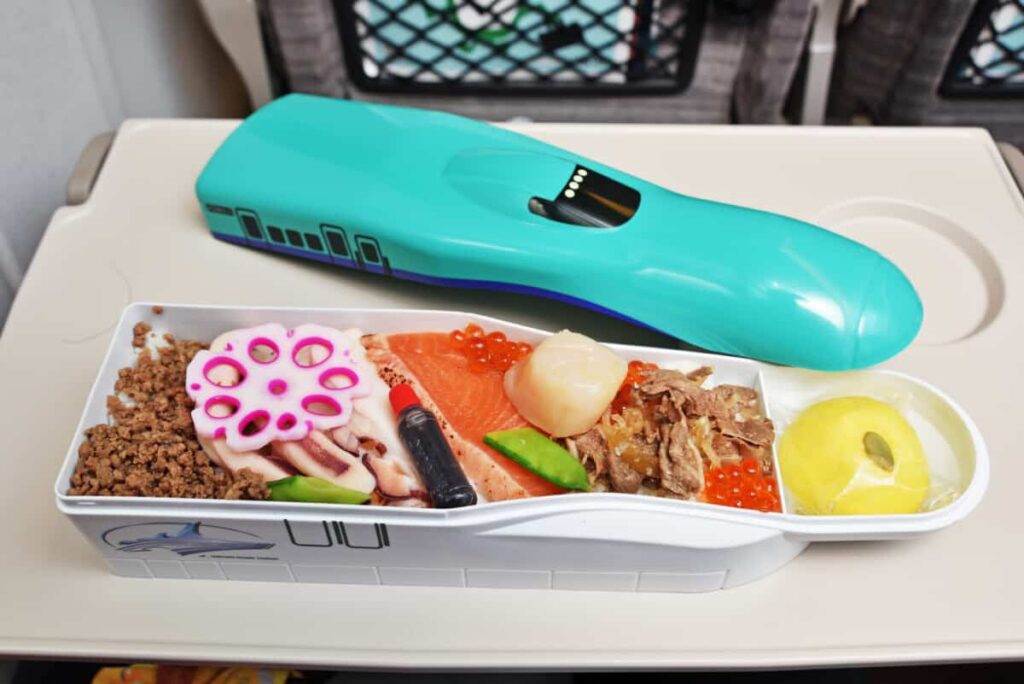
The lunchbox components often represent the area’s primary cuisine, with certain stations becoming nationally famous for the excellence of their bento boxes.
Similar train dinners have gained popularity in various East Asian nations, most notably Taiwan.
A Kyaraben Bento Box
Kyaraben, often known as “character bento,” are lunchboxes built for children in which rice and other bento box meals are molded and sculpted to appear like popular characters from anime, manga, or video games.
The colorful figures not only offer a splash of color to the conventional lunchbox, but they also inspire youngsters to eat meals they don’t particularly prefer such as vegetables.
In addition to renowned individuals, a Kyaraben bento may contain animals or natural landscapes to symbolize the season or festival.
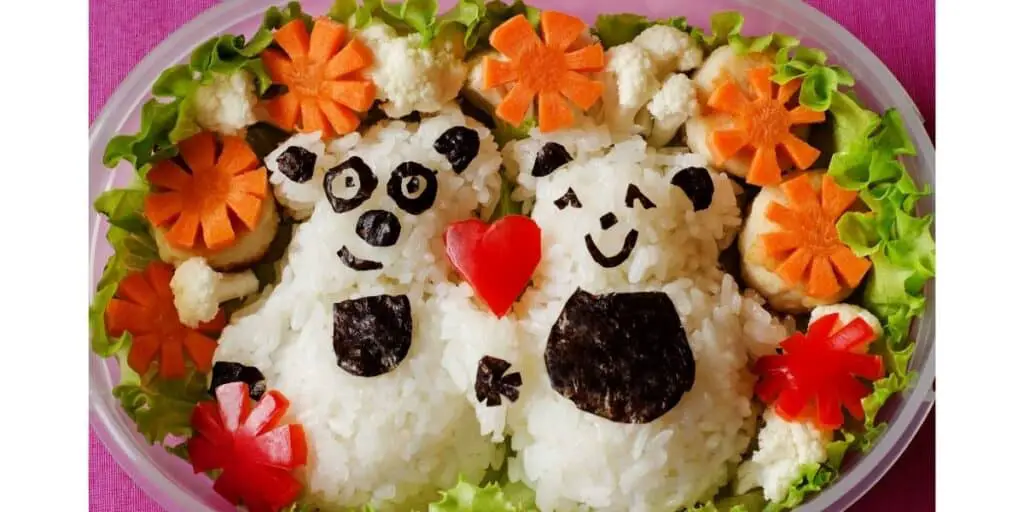
What are the Most Popular Foods Found in a Traditional Japanese Bento Box?
Rice
Rice is the foundation of almost every bento. A bento without rice is like a sandwich without bread. Rice can be cooked for bento boxes in various ways, including traditional white rice, brown rice, rice cooked with red beans, rice with mixed grains, rice wrapped with a layer of nori seaweed, and rice combined with seaweed.
Umeboshi
Umeboshi are pickled ume fruits that are a cross between an apricot and a plum and are sometimes referred to as pickled plums.
An umeboshi is produced by soaking young ume fruits in brine with red shiso leaves, contributing flavor and color.
The taste of these finished plums is sweet, tart, and salty. However, the specific flavor varies depending on the kind you choose.
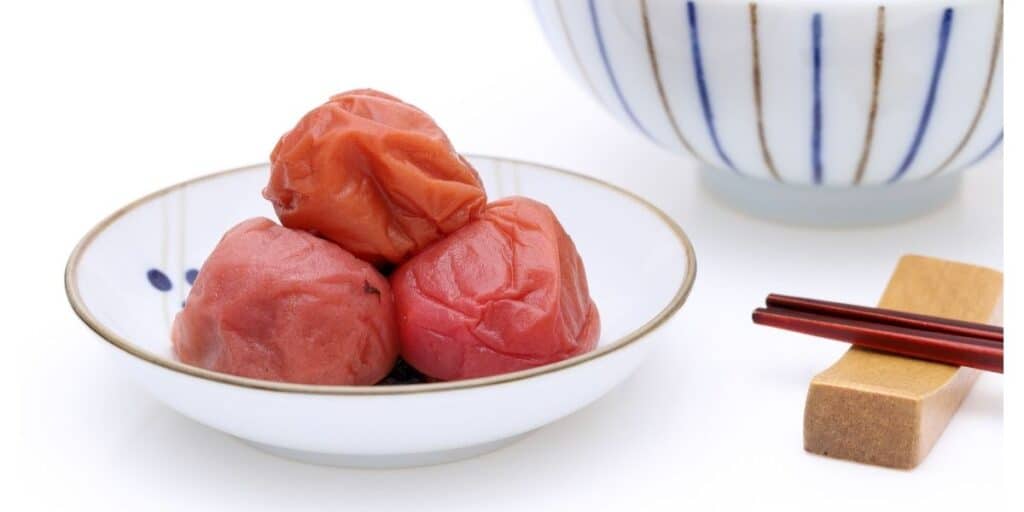
Tamagoyaki
Tamagoyaki is a Japanese omelet produced by rolling multiple layers of cooked beaten eggs together. It is frequently made on a rectangular omelet pan known as a makiyakinabe or tamagoyaki.
Tamagoyaki comes in a variety of flavors. It is created by blending eggs, sugar, and soy sauce. In some recipes, sake and mirin are also utilized.
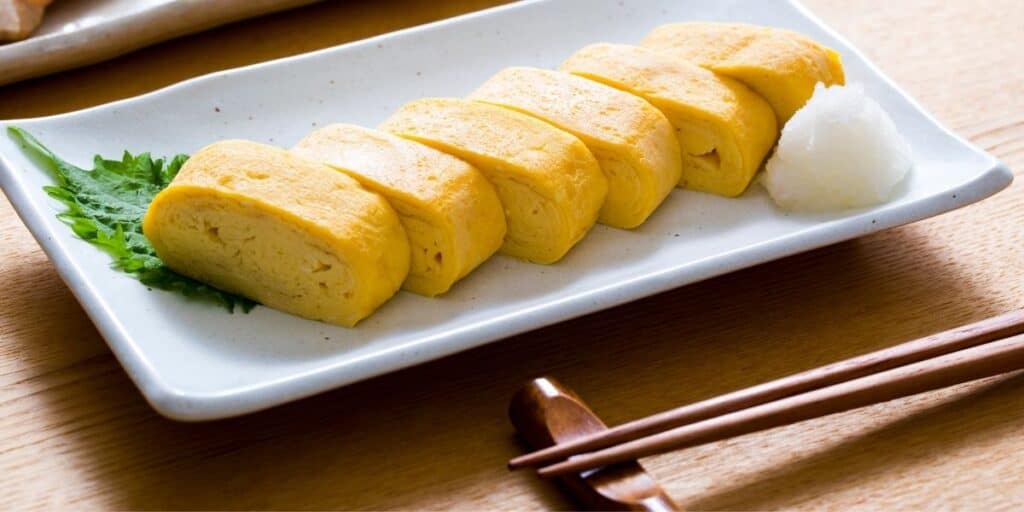
Agemono
In Japanese cuisine, agemono refers to any form of deep-fried food and encompasses three main frying techniques.
While koromo-age is best for seasonal fish, seafood, and vegetables, suage is best for frying freshwater fish, green peppers, eggplant and other vegetables.
Finally, karaage is often used for meat, most commonly chicken, and includes a variety known as tatsutaage, in which chicken pieces are marinated in a combination of sake, soy sauce, and sugar before being gently used coated with arrowroot starch and deep-fried.
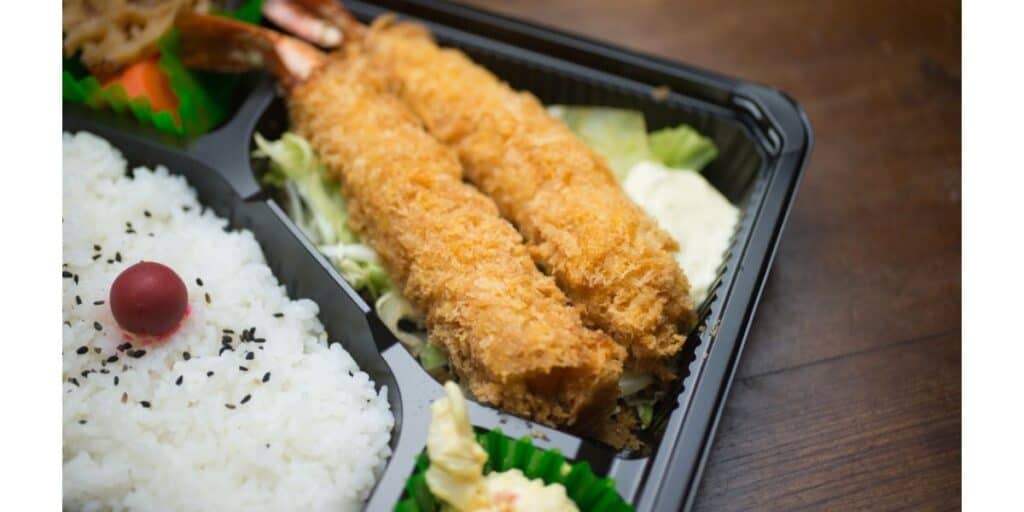
Tonkatsu
Tonkatsu is a traditional Japanese dish created with a breaded and deep-fried pork cutlet. It entails coating pork pieces with panko breadcrumbs, frying them in oil, then serving them with rice and shredded cabbage.
The two most common cuts are fillet and loin. Tonkatsu is also the foundation for other meals like Katsukar and katsudon.
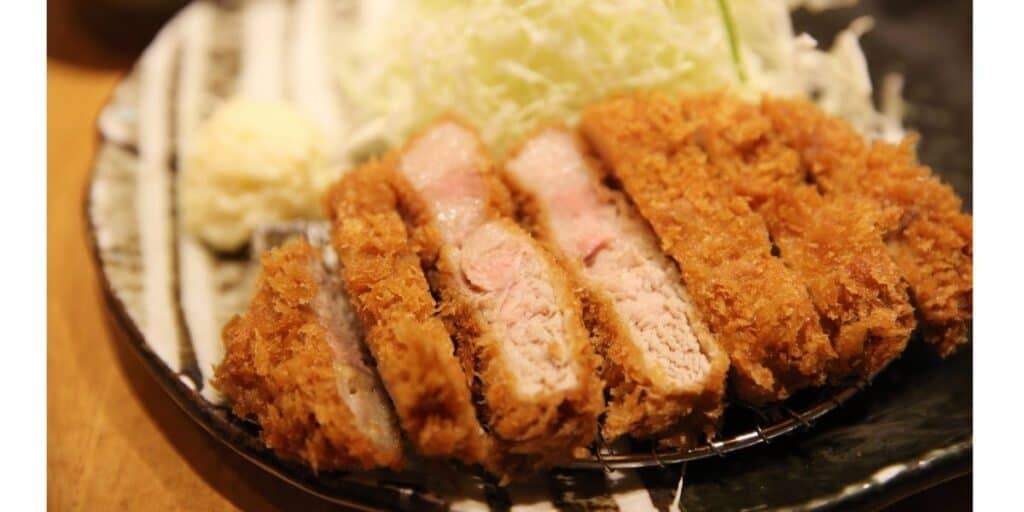
Nimono
Nimono is a Japanese meal that is simmered. A nimono is often made using an essential component that has been cooked in shiru stock and seasoned with sake, soy sauce, and a tiny bit of sweetening.
Over time, the nimono is simmered in the shiru until the liquid is absorbed into the primary ingredient or evaporates.
A nimono’s base components are often a vegetable, fish, seafood, or tofu, either alone or in combination.
Dashi is the most common shiru stock for a nimono. In addition to sake and soy sauce, the stock can be flavored with mirin, sugar, salt, vinegar, miso, and other spices.
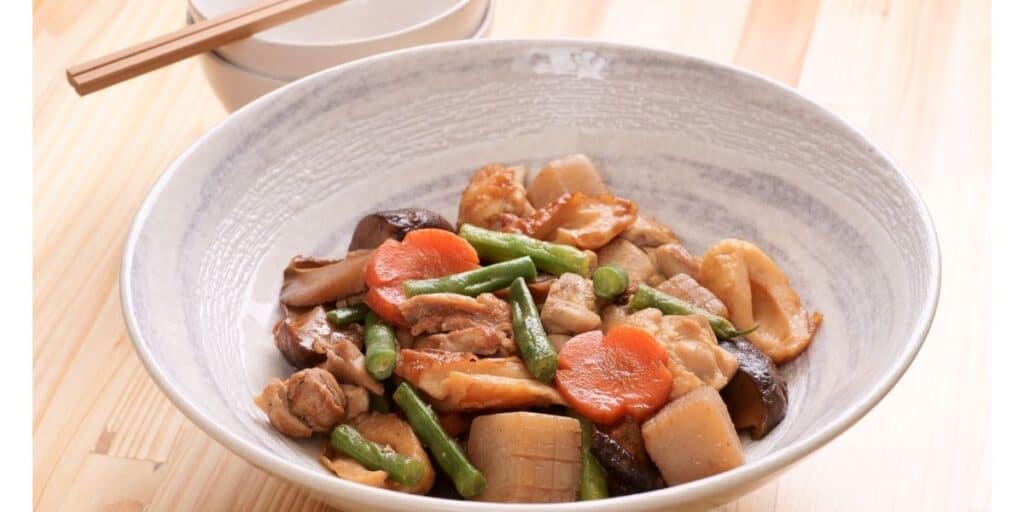
Stewed Beef
Nikujaga, or stewed beef, is a Japanese beef stew that is boiled with traditional Japanese ingredients such as soy sauce, sugar, sake, and mirin.
The stew has a good balance of sweet and salty flavors that work surprisingly nicely. Nikujaga is a classic Japanese favorite because it is simple to make and delicious.
Traditional Japanese Sushi
Sushi is a classic Japanese cuisine consisting of prepared vinegared rice, generally with some sugar and salt, accompanied by a range of raw fish and vegetables.
Sushi styles and presentation vary greatly, but one crucial element is “sushi rice.”
Sushi is often cooked using medium-grain white rice, although it can also be made with brown or short-grain rice.
Sushi is frequently made with seafood like squid, eel, yellowtail, salmon, tuna, or imitation crab meat.
However, sushi can come in various vegetarian options as it is frequently accompanied by pickled ginger, wasabi, and soy sauce. Pickled daikon or daikon radish are also common garnishes for the meal.
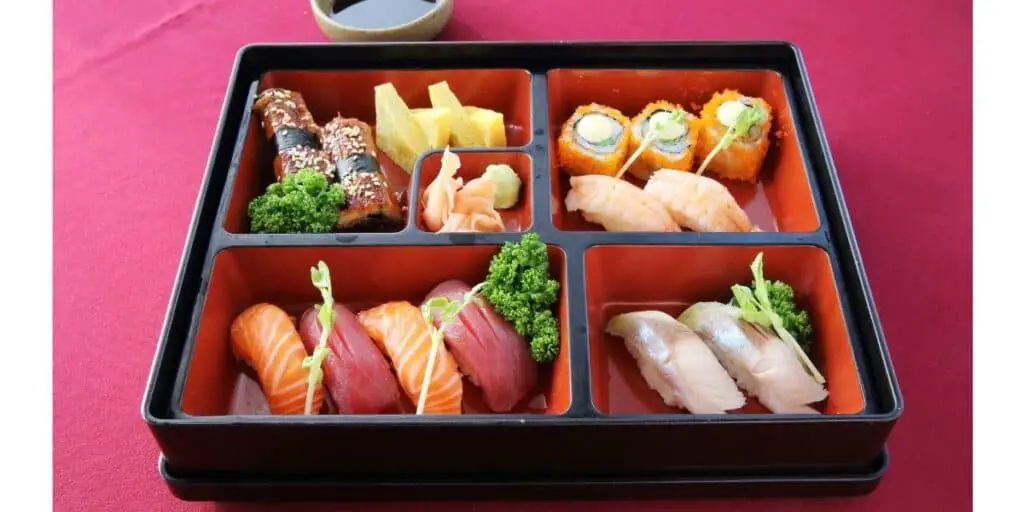
What are the Most Popular Containers to Use When Making a Bento Box?
Convenience store bento boxes are typically composed of disposable plastic, but reusable containers are created from various materials with varying degrees of quality and cost.
Typical standard bento containers are made of materials like aluminum, glass, plastic, stainless steel, or silicon and will typically last longer if properly cared for.
Thermal materials for keeping meals warm, lacquered wood, bamboo, and melamine are among the costliest possibilities. Some of the most attractive wooden vessels are treasured as family heirlooms.










